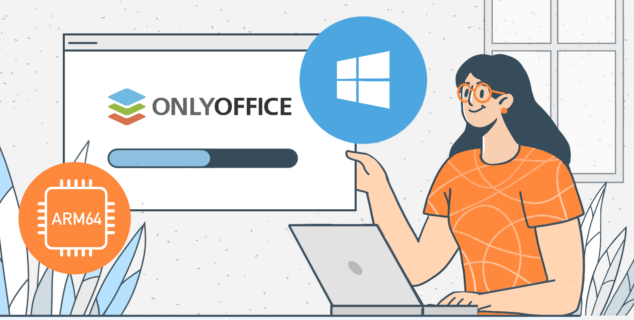Electronic File Management: A short guide
Managing digital files well is key to working efficiently today. Without a solid strategy, your digital documents can quickly become disorganized and hard to manage.
This short guide explains what electronic file management (EFM) is, why it’s important, how to do it effectively, and which tools can help—including a leading all-in-one solution.

Understanding Electronic File Management
In today’s increasingly digital world, the way we manage files can make or break our productivity. Gone are the days of cluttered desks and filing cabinets overflowing with paper. Now, it’s all about digital efficiency, structure, and collaboration. But simply moving files from paper to computer isn’t enough. Without a good electronic file management (EFM) strategy, digital documents can quickly become as chaotic as a disorganized filing cabinet.
Electronic File Management refers to the systems and strategies used to handle digital documents and data. This includes the processes of:
- Creating and naming files
- Organizing them into folders
- Storing them in accessible and secure locations
- Sharing and collaborating with others
- Securing sensitive information
- Archiving or deleting files when appropriate
A good EFM system ensures that documents are easy to find, access, and collaborate on, while also maintaining security and compliance with relevant regulations.
The main goal of EFM is to reduce time spent searching for documents, prevent data loss, ensure smooth collaboration, and support compliance. Whether you are an individual freelancer, a small business owner, or part of a large enterprise, EFM is critical to your daily operations.
Why Electronic File Management is crucial
There are several reasons why EFM is indispensable in the modern workplace:
- Productivity: A well-structured system reduces the time spent locating and managing documents, allowing employees to focus on meaningful tasks.
- Collaboration: Teams can co-author documents, review materials, and provide feedback efficiently with centralized access.
- Security: Digital files can be protected through encryption, password protection, and role-based access control.
- Version control: Prevents accidental overwrites and allows restoration of previous versions.
- Compliance: Supports regulatory requirements on data retention, confidentiality, and audit trails.
How to implement an effective file management system
Setting up an efficient EFM system requires planning and consistency. Here are some key components to consider:
- Folder structure: Design a logical hierarchy that reflects your workflow. Organize files by department, client, year, or project.
- Naming conventions: Use clear and consistent file names that include relevant information such as date, version, and topic (e.g., “2025_Q1_Sales_Report_v1.0.docx”).
- Metadata and tagging: Enhance searchability by applying descriptive tags or adding metadata fields such as author, department, or file type.
- Access control: Define user permissions to ensure sensitive documents are only accessible to authorized personnel.
- Versioning and audit trails: Implement a version control system that logs changes and allows file recovery.
- Backups and disaster recovery: Automate regular backups and store files redundantly in secure locations to mitigate data loss risks.
- User training: Educate your team on best practices for using and maintaining the EFM system.
ONLYOFFICE DocSpace: A complete solution for modern file management
Among the many tools available, ONLYOFFICE DocSpace stands out as a comprehensive, user-friendly, and secure solution for electronic file management: a secure, flexible, and fully collaborative workspace where teams, clients, and partners can come together to work on documents in real time.
ONLYOFFICE DocSpace is designed to help businesses of all sizes streamline file management, enhance collaboration, and maintain full control over data.

Create spaces that work the way you do
With DocSpace, you can create dedicated rooms tailored to your specific needs—be it internal projects, secure client portals, virtual data rooms, or contract negotiations. Each room is a self-contained space where you invite users and set precise access permissions based on their role.
Granular permission controls let you define who can view, edit, comment on, download, or share documents. Whether you’re onboarding new clients, managing sensitive legal files, or coordinating with remote teams, DocSpace gives you full visibility and control over your data.
You can invite participants via a simple link, eliminating the need for complex account setups. This makes DocSpace ideal for both long-term collaboration and short-term document exchange.

Real-time document collaboration with ONLYOFFICE Docs
At the core of DocSpace is a set of editors for text documents, spreadsheets, presentations, and fillable PDF forms. These editors offer a familiar user experience and full compatibility with the most popular formats.
What makes ONLYOFFICE Docs truly stand out is its real-time co-editing functionality. Multiple users can work on the same file simultaneously, with all changes instantly visible to everyone involved. Built-in features like comments and chat keep communication in one place, reducing the need for back-and-forth emails.
You also get access to version history and document comparison tools, so you can easily track changes, restore earlier versions, or review differences between document iterations. Whether you’re editing a marketing plan, reviewing a legal contract, or preparing a financial report, you can do it all in one secure space.
Integrations with your favorite tools
ONLYOFFICE DocSpace is designed to fit into your existing ecosystem. It integrates smoothly with popular platforms like Drupal, Pipedrive, Zapier, and more.
These integrations allow teams to enhance their current workflows without disruption—keeping everything connected and accessible through a single interface.
AI-powered features for better productivity
To make your work even smarter, ONLYOFFICE DocSpace includes access to AI-powered tools. Whether you need to generate content, translate text, summarize lengthy documents, or improve writing clarity, DocSpace lets you choose from multiple AI providers depending on your needs.
This flexible AI integration model ensures that your team always has access to the best tool for the task at hand, while maintaining full control over data usage and privacy.
Access from anywhere, anytime
In today’s hybrid work environment, flexibility is key. ONLYOFFICE DocSpace is available in the cloud or can be deployed on-premises for full data sovereignty. It also offers desktop and mobile apps, so your team can access and manage documents securely, whether in the office, at home, or on the go.
A real-world example: Using ONLYOFFICE DocSpace in a project-based business
Consider a creative agency managing multiple client campaigns. With ONLYOFFICE DocSpace each project can have its own secure folder, accessible to internal staff and external partners. Creative briefs, drafts, contracts, and timelines can all be stored in one place, with version history and access control built-in.
As team members work on presentations or reports, they can collaborate in real time, add comments, and assign tasks. Clients can review documents with view-only access or suggest edits depending on their permissions. The agency benefits from a transparent, organized, and secure file management process, all within a single interface.
ONLYOFFICE DocSpace in academic workflows
A university department often manages a large volume of research papers, teaching materials, administrative forms, and student records. ONLYOFFICE DocSpace can be used to create a centralized repository accessible to faculty, staff, and students based on assigned roles.
For example, lecturers can co-edit academic papers, while administrative staff can handle internal reports and forms with full version tracking. Students might be given read-only access to course materials and editing rights for group projects. Integration with platforms like Moodle enhances the experience, connecting ONLYOFFICE DocSpace directly with the learning environment. This setup reduces email clutter, version confusion, and access issues, creating a more organized and collaborative academic workspace.
Conclusion
Staying on top of digital files is essential for any modern business and not only. Without a smart system in place, documents pile up, get misplaced, or fall into the wrong hands. That’s why having a reliable way to organize, share, and protect your files isn’t just helpful—it’s necessary.
ONLYOFFICE offers a practical solution to these challenges. It brings together everything you need—editing tools, secure storage, permission control, and live collaboration—into one easy-to-use platform. Whether you’re a freelancer juggling projects or part of a large team, it helps keep your work clear, connected, and secure.
If you’re ready to streamline your document workflows and simplify your digital workspace, ONLYOFFICE DocSpace is an ideal place to start.
Create your free ONLYOFFICE account
View, edit and collaborate on docs, sheets, slides, forms, and PDF files online.


